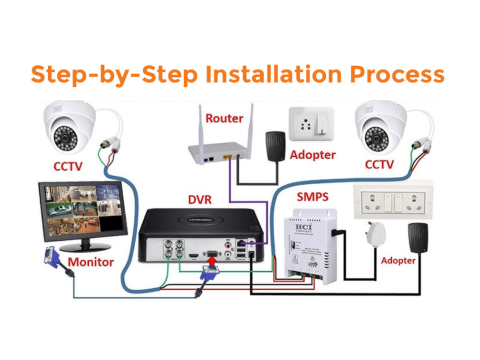How to Install a Surveillance Camera
Whether you're installing a surveillance camera for home, office, or outdoor security, understanding the process is essential. Here's a comprehensive guide for DIY installation.
Step 1: Choosing the Right Camera Type
Cameras come in two popular types:
Dome Cameras:
- Ideal for ceiling or wall mounting.
- Lightweight and adaptable to different surfaces.
Body Cameras (with Brackets):
- Suitable for outdoor setups.
- Require sturdy walls for mounting due to their heavier weight.
Step 2: Installing Dome Cameras
Ceiling Mount:
- Use screws to secure the camera directly onto the ceiling.
- For lightweight drop ceilings, secure the camera using a wide backing plate.
Wall Mount:
- Adjust the camera’s horizontal rotation for limited viewing angles.
- Use anchors or screws for added stability.
Step 3: Installing Body Cameras on Brackets
- Sturdy Wall Mounting:
- Use durable anchors and screws to prevent vibrations or misalignment.
- Ensure outdoor brackets are weather-resistant and conceal wiring.
Step 4: Handling Cables for a Clean Look
Options for Concealing Wires:
- Wireless Systems: Ideal for minimal interference with interior decor.
- Hidden Wiring:
- During renovations, conceal cables within wall grooves or studs.
- For completed spaces, use cable conduits or run wires behind baseboards.
Step 5: Installing in Homes or Apartments
Preserving Interior Design:
- Use wireless systems to avoid exposed wires.
- Hide cables within walls or ceiling spaces for a polished look.
Outdoor Setup:
- Protect wires with conduit to avoid weather damage or vandalism.
- Mount cameras in high, hard-to-reach locations.
Step 6: Installing Hidden Cameras
Two methods for concealed camera setups:
Camouflaging Standard Cameras:
- Paint to match the background.
- Use enclosures resembling household items.
Using Specialized Hidden Cameras:
- Choose cameras designed to resemble everyday objects (e.g., smoke detectors).
Additional Tips
Placement:
- Ensure optimal viewing angles for entryways, driveways, or key indoor areas.
Weatherproofing:
- Use cameras rated for outdoor use with at least an IP65 rating.
Power Supply:
- Check compatibility and consider backup options like UPS systems for power outages.
For more details, explore guides on selecting the right installation locations and tips for various property types, including homes, offices, and outdoor areas.
Conclusion:
Installing surveillance cameras requires careful planning, especially for wire concealment and optimal placement. Whether you're a beginner or an experienced DIY enthusiast, following these steps ensures a secure and efficient setup tailored to your specific needs.

